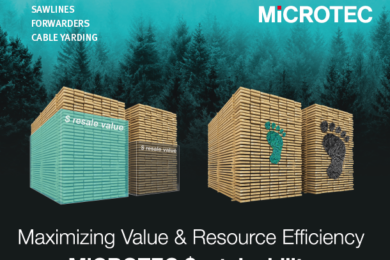With deforestation as the second leading source of climate-changing greenhouse gas emissions, experts are focusing the discussion on the viability of compensating countries for protecting their forests, according to information from the World Business Council for Sustainable Development (WBCSD). The proposal ‘Reduced Emissions from Deforestation’ (RED) was not included in the Clean Development Mechanism (CDM) of the Kyoto Protocol on Climate Change, but is now being evaluated by scientists, companies and agencies in poor countries that have extensive forested areas.
The CDM allows governments and corporations of industrialised countries (required under Kyoto to cut greenhouse gas emissions) to meet part of their obligations by investing in ‘clean’ projects in developing countries to get certificates of emissions reductions at a much lower cost than reducing emissions at home. “Slowing emissions from deforestation would not stop climate change, but it could be an important part of a many-part strategy,” Head of the Global Ecology Department at the Carnegie Institution in Washington, Christopher Field, told the WBCSD. RED emerged in 2005 at the 11th Conference of Parties to the United Nations Convention on Climate Change, led by Papua New Guinea and Costa Rica, with support from the Coalition for Rainforest Nations. Its aim was to include ‘avoided deforestation’ in the global market of carbon credits – carbon dioxide being the principal greenhouse gas. Implementation is expected to be finalised at the 13 Conference of Parties, to take place in December in Bali, Indonesia. Brazil, for its part, has proposed a fund with voluntary contributions of public money to compensate the effort made by developing countries to reduce deforestation, and that they would be remunerated based on prevented emissions. In the article ‘Tropical Forests and Climate Policy’, published in May, Field and other researchers proposed to slow the current pace of deforestation 50% by the year 2050. That would be the equivalent of 50,000 Mt of carbon prevented from being released into the atmosphere, or equal to six years of emissions of gases from fossil fuel combustion, the experts said. But that figure is meaningless, according to Britain-based Biofuelwatch campaigner Almuth Ernsting, because RED does not intend to stop industrial-scale logging: “There is growing evidence that many rainforests, including the Amazon forest, will collapse well before the destruction of a further 50%.” The Amazon is the forest ecosystem with the most carbon – 305 t/ha, of which 28% is in the soil, according to a 1998 study. Its destruction would release 120,000 Mt of carbon by 2050, which would be catastrophic to the global climate, Ernsting said. The transformation of natural ecosystems into farmland entails a loss of 75% of the carbon in tropical soils. That implies between 18-20% of the total emissions from deforestation, according to experts. There is about twice as much carbon stored in forests and soils as exists in the atmosphere, said Tuffs University Centre for International Environment and Resource Policy Director, William Moomaw. Planting trees in other areas to compensate for logging does not work because it often is done in areas not apt for forests, he explained. This problem has come up with tree plantations intended to absorb carbon, and could be repeated in a scheme for reducing emissions from deforestation. The carbon market helped finance monoculture plantations, and had negative results for the soil, local communities, water resources and, ironically, carbon emissions, says Ernsting. There is also concern about the difficulties in controlling changes in the carbon stores of forests once the system is applied. “Monitoring entails some costs, but existing satellite technologies make the challenge relatively straightforward,” Field said. National measurement systems can function, according to Moomaw. In the international arena, the European Union, US and Brazil would need to form a coordinated satellite monitoring team, available for countries with few resources but rich in forests. Compensation for avoided deforestation should reduce net emissions, encouraging a change in international frameworks and adopting an emissions tariff for countries with little or no historic deforestation, according to the study ‘No Forest Left Behind’ by Conservation International. Countries with much forest and relatively little deforestation are: Belize, Bhutan, Colombia, Democratic Republic of the Congo, French Guiana, Gabon, Guyana, Panama, Peru, Suriname and Zambia. These areas are inhabited mostly by indigenous people, they would enter the carbon market through ‘preventive credits’ or compensation that they would forfeit if there was an increase in loss of forest. In order for the system to function equitably, it is important that local communities participate. “The principle of avoided deforestation is not a bad principle, however the means through which it could be realised are complex and fraught with unequal power relations,” according to Helen Leake, of the non-governmental Forest Peoples Program. “The devil is in the details.”
*This report first appeared on the World Business Council for Sustainable Development website






